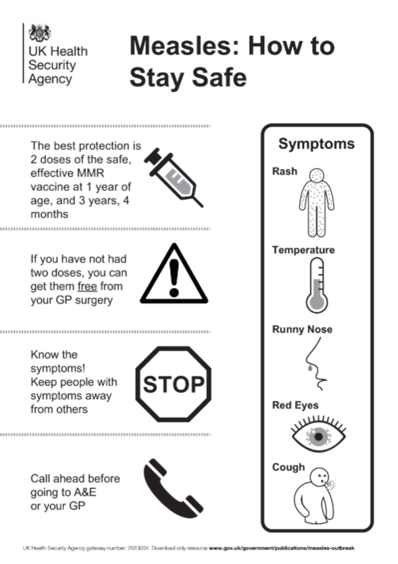Funded 30 hours childcare allowance
Working parents of three and four year olds are potentially eligible for an additional 15 hours a week childcare which is known as the 30 Hours Funded Childcare.

Highlight to listen
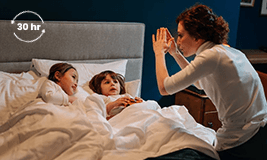
Working parents of three and four year olds are potentially eligible for an additional 15 hours a week childcare which is known as the 30 Hours Funded Childcare.
Working parents of three and four year olds are potentially eligible for an additional 15 hours a week childcare which is known as the 30 Hours Funded Childcare.
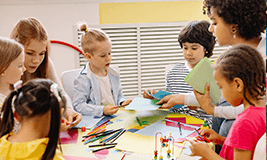
Free entitlement to childcare is available for all 3 and 4 year olds. It allows access to free, good quality, flexible early education or childcare.
Free entitlement to childcare is available for all 3 and 4 year olds. It allows access to free, good quality, flexible early education or childcare.
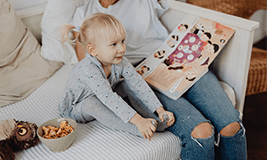
Early learning is good for children. Its fun, safe and can help with children’s talking and listening skills. Your child may be eligible for free childcare of up to 15 hours per week, for 38 weeks of the year (or an equivalent amount) from the term after their 2nd birthday.
Early learning is good for children. Its fun, safe and can help with children’s talking and listening skills. Your child may be eligible for free childcare of up to 15 hours per week, for 38 weeks of the year (or an equivalent amount) from the term after their 2nd birthday.
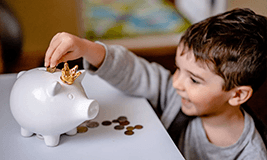
Childcare Choices is a dedicated site for childcare and the options available for the free entitlements and any help or support with paying for childcare.
Childcare Choices is a dedicated site for childcare and the options available for the free entitlements and any help or support with paying for childcare.
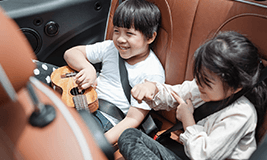
A car seat is probably one of the most important purchases you will make for your child, but with so many types and models of car seat on the market, it can be difficult to know where to start and which one to choose.
A car seat is probably one of the most important purchases you will make for your child, but with so many types and models of car seat on the market, it can be difficult to know where to start and which one to choose.
You’ll need to buy a baby car seat before your baby is born. It’s important to buy one that fits your car and is suitable for a newborn. The NHS website has information on choosing a baby car seat.
Find out more about choosing and fitting a car seat here.
NHS advice about choosing a car seat
ROSPA’s guide to choosing and fitting the right car seat and your other questions.
Child accident prevention trust guide to in car safety.
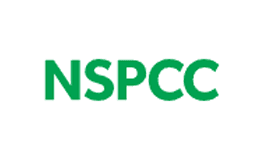
Understanding online safety is tricky for all ages. We have advice to help you learn about staying safe online as a family.
Understanding online safety is tricky for all ages. We have advice to help you learn about staying safe online as a family.
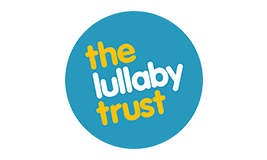
Co-sleeping with your baby. Some parents choose to share a bed or other sleep surface (also known as co-sleeping) with their babies. Advice on how to co-sleep more safely.
Co-sleeping with your baby. Some parents choose to share a bed or other sleep surface (also known as co-sleeping) with their babies. Advice on how to co-sleep more safely.
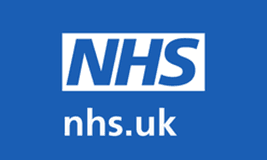
Babies and young children can become ill during very hot weather. Try these tips for keeping your child happy and healthy in the heat.
Babies and young children can become ill during very hot weather. Try these tips for keeping your child happy and healthy in the heat.
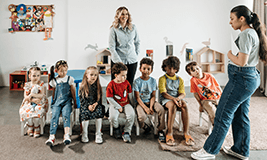
If you are worried about a child please call the Torbay Multi-Agency Safeguarding Hub on 01803 208100 or email mash@torbay.gov.uk
If you are worried about a child please call the Torbay Multi-Agency Safeguarding Hub on 01803 208100 or email mash@torbay.gov.uk
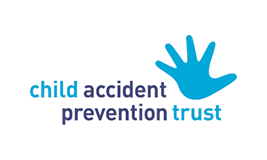
Prevention is key, so get down to your child’s level to check what they can see and reach. You’ll also need to do this when you visit new places. The Child Accident Prevention Trust (CAPT) has information on garden sfaety, preventing burns, button batteries, poisioning and lots more
Prevention is key, so get down to your child’s level to check what they can see and reach. You’ll also need to do this when you visit new places. The Child Accident Prevention Trust (CAPT) has information on garden sfaety, preventing burns, button batteries, poisioning and lots more
Road and pedestrian safety, fact sheets and more information and advice from the Child Accident prevention Trust

What do if your child has an accident and the latest safety advice.
What do if your child has an accident and the latest safety advice.
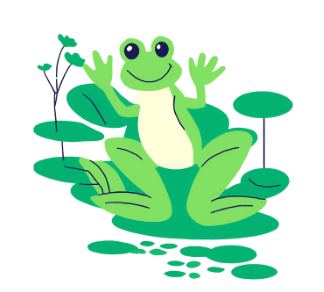
Ideas to develop your baby or child’s early communication skills. Find strategies, activities and resources that will help your child develop understanding, talking or communication skills. The resources and activities might be things you choose to do yourself at home. They might also include more particular activities advised by a practitioner or activities and programmes that your child’s school or setting might use. You may find more specific activities that can be advised or delivered by a speech and language therapist.
Ideas to develop your baby or child’s early communication skills. Find strategies, activities and resources that will help your child develop understanding, talking or communication skills. The resources and activities might be things you choose to do yourself at home. They might also include more particular activities advised by a practitioner or activities and programmes that your child’s school or setting might use. You may find more specific activities that can be advised or delivered by a speech and language therapist.
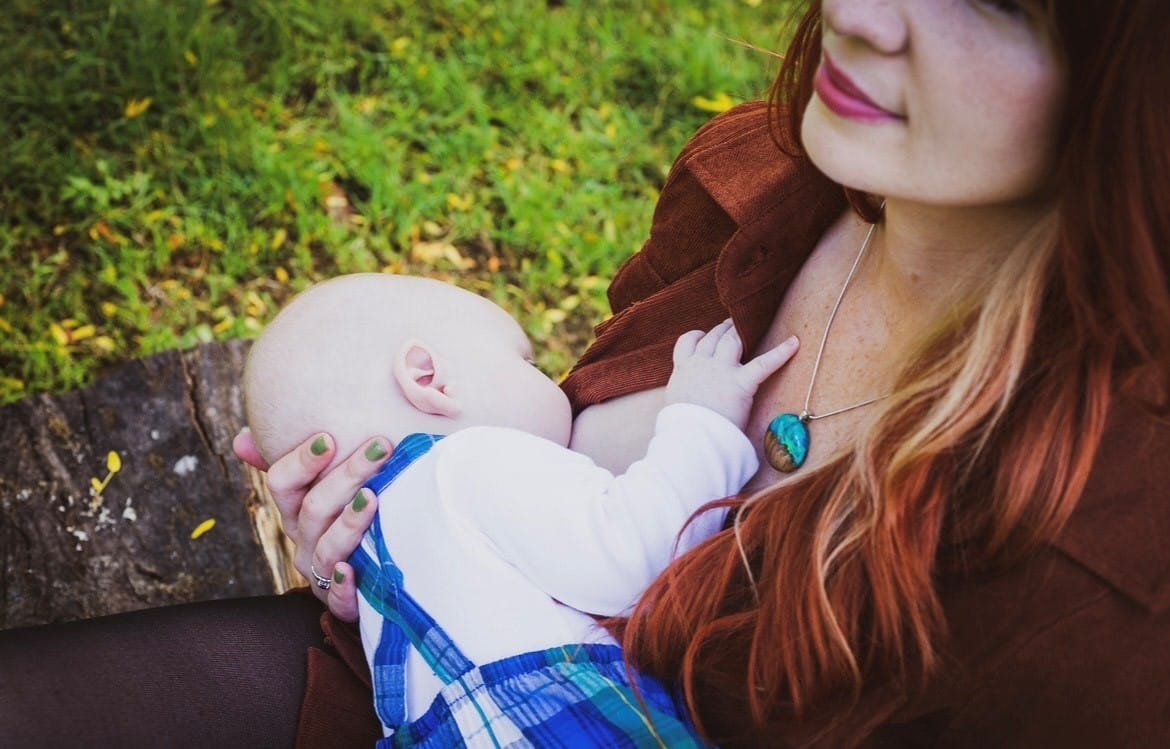
It is sometimes hard to know what to do and where to go to support infant feeding, whether its breast or formula feeding or starting solid foods.
It is sometimes hard to know what to do and where to go to support infant feeding, whether its breast or formula feeding or starting solid foods.
Click on the visit site button for Information, advice, useful videos and apps for parents, carers, co-parents, fathers and where to find support.

Our 0 to 19 health practitioners will get in touch to review your child’s development at around 10 months and 2 years and 3 months. We will talk to you about how your baby/child is growing and developing. We’ll share information about oral health, healthy eating, vision, hearing, language development and keeping your child safe.
Our 0 to 19 health practitioners will get in touch to review your child’s development at around 10 months and 2 years and 3 months. We will talk to you about how your baby/child is growing and developing. We’ll share information about oral health, healthy eating, vision, hearing, language development and keeping your child safe.
It’s helpful, where possible, for both parents to attend. This gives you both a chance to ask questions and talk about any concerns you have.
If you are concerned about your child’s development it is important to seek support and advice. You can contact our health team by calling our advice line on 0300 333 5352 or email publichealthnursing.torbay@nhs.net. Our opening hours are 9am-5pm Monday-Friday (excluding bank holidays). A member of our 0 to19 team is able to complete an assessment of your child and refer to other services as needed, including: community paediatrician, speech and language therapy, hearing assessment, and vision assessment.
If your child attends school, nursery or a registered childminder, talk to them about your worries – they will be able to work with you to build your child’s skills and advise on any next steps needed.
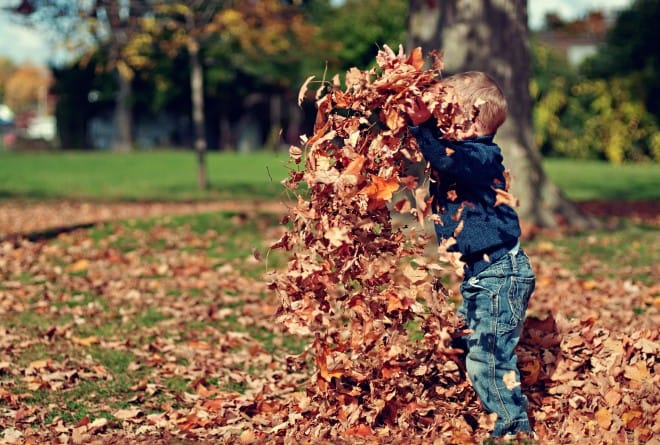
Ages and Stages Questionnaires (ASQs) help you and our staff understand how your child is developing, they are just one of the tools we may use during our contact with you – but of course most important of all is what you tell us about your child.
Ages and Stages Questionnaires (ASQs) help you and our staff understand how your child is developing, they are just one of the tools we may use during our contact with you – but of course most important of all is what you tell us about your child.
The ASQs are not a measure of how well your child is or isn’t doing, as we know all children develop differently. They are something that we use together to talk about the things your child does easily, to think about any concerns you might have and how we can support you and your child with those. They are split into 5 different areas;
Communication: Your child’s language skills, both what your child understands and what he or she can say – this can be sounds, babbling or talking.
Gross Motor: How your child uses their arms and legs for sitting, crawling, walking, running, and other activities.
Fine Motor: How your child uses their hands and fingers – for example scribbling or picking up food.
Problem Solving: How your child plays with toys and solves problems.
Personal-Social: Your child’s self-help skills and how they play and interact with others.
The ASQ that is used is based on the age of your child, but we may decide together that this is not right for your child and decide to use a different age or an alternative assessment tool – this is nothing to worry about – we are just making sure we use the right tool for your child.
Health visiting and school nursing are part of our 0 to 19 Torbay team who focus on the health and development of your child. We will get in touch to review your child’s development at the following key stages:
You can contact the 0 to 19 Torbay team by calling our advice line on 0300 333 5352 or emailing publichealthnursing.torbay@nhs.net. Our opening hours are 9am-5pm Monday-Friday (excluding bank holidays).
Watch this great TED Talk from Molly Wright: How every child can thrive by five
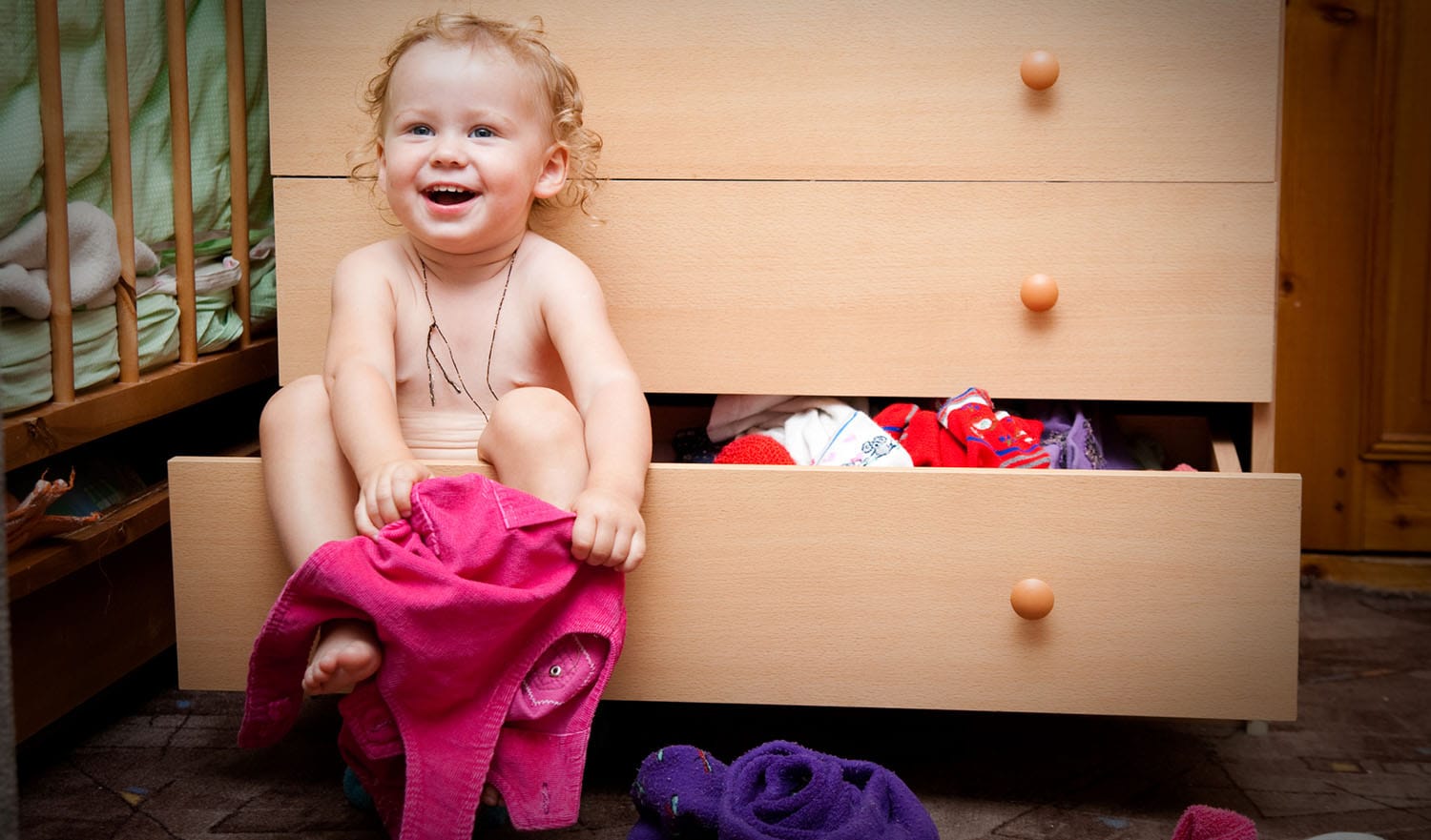
Dressing and undressing skills are very much a part of everyday life for all of us. The act of dressing and undressing oneself completely independently can be a complicated and difficult process and requires a number of pre-requisite skills:
Dressing and undressing skills are very much a part of everyday life for all of us. The act of dressing and undressing oneself completely independently can be a complicated and difficult process and requires a number of pre-requisite skills:
All children learn to undress first. You can help your child to learn to dress by breaking each part of dressing into little steps. Then, as they learn each step, you can let them carry out more steps for themselves.
Some children find dressing hard because they have movement or learning difficulties.
Learning to dress independently is an important life skill. Not only does it give the child a sense of achievement to master a new skill but also allows the parent a few precious minutes first thing in the morning! It will really help your child if they can get their coat and shoes on by themselves before they start school. Find out more here.

Using a potty is a new skill for your child to learn. It’s best to take it slowly and go at your child’s pace. Being patient with them will help them get it right, even if you sometimes feel frustrated. Children are able to control their bladder and bowels when they’re physically ready and when they want to be dry and clean. Every child is different, so it’s best not to compare your child with others. Bear in mind that most children can control their bowels before their bladder.
Using a potty is a new skill for your child to learn. It’s best to take it slowly and go at your child’s pace. Being patient with them will help them get it right, even if you sometimes feel frustrated. Children are able to control their bladder and bowels when they’re physically ready and when they want to be dry and clean. Every child is different, so it’s best not to compare your child with others. Bear in mind that most children can control their bowels before their bladder.
It usually takes a little longer for children to learn to stay dry throughout the night. Although most learn this between the ages of three and five, up to one in five children aged five sometimes wet the bed.
When to start potty training
Remember, you can’t force your child to use a potty. If they’re not ready, you won’t be able to make them use it. In time, they will want to use one – most children won’t want to go to school in nappies any more than you would want them to. In the meantime, the best thing you can do is to encourage the behaviour you want. Most parents start thinking about potty training when their child is between two and two-and-a-half, but there’s no perfect time. Some people find it easier to start in the summer, when there are fewer clothes to take off and washed clothes dry more quickly. Try potty training when there are no great disruptions or changes to your child’s or your family’s routine. It’s important to stay consistent, so you don’t confuse your child. If you go out, take the potty with you, so your child understands that you’d like them to wee or poo in the potty every time they need to go. Check that any other people who look after your child can help with potty training in the same way as you. You can try to work out when your child is ready. There are a number of signs that your child is starting to develop bladder control:
Potty training is usually fastest if your child is at the last stage before you start the training. If you start earlier, be prepared for a lot of accidents as your child learns. They also need to be able to sit on the potty and get up from it when they’re done, and follow your instructions.
Getting ready for potty training
Using a potty will be new to your child, so get them used to the idea gradually. It’s usually easier if boys start by sitting on the potty before they switch to standing up later on. Talk about your child’s nappy changes as you do them, so they understand wee and poo and what a wet nappy means. If you always change their nappy in the bathroom when you’re at home, they will learn that’s the place where people go to the loo. Helping you flush the toilet and wash their hands is also a good idea.
Leave a potty where your child can see it and explain what it’s for. Children learn by watching and copying. If you’ve got an older child, your younger child may see them using it, which will be a great help. It helps to let your child see you using the toilet and explain what you’re doing. Using your child’s toys to show what the potty is for can also help. You could see if your child is happy to sit on the potty for a moment, just to get used to it, when you’re changing their nappy, especially when you’re getting them dressed for the day or ready for bed at night.
How to start potty training
Keep the potty in the bathroom. If that’s upstairs, keep another potty downstairs so your child can reach the potty easily wherever they are. The idea is to make sitting on the potty part of everyday life for your child. Encourage your child to sit on the potty after meals, because digesting food often leads to an urge to do a poo. Having a book to look at or toys to play with can help your child sit still on the potty.
If your child regularly does a poo at the same time each day, leave their nappy off and suggest that they go in the potty. If your child is even the slightest bit upset by the idea, just put the nappy back on and leave it a few more weeks before trying again. Encouraging them to use the potty to wee will help build their confidence for when they are ready to use it to poo. As soon as you see that your child knows when they’re going to pee, encourage them to use their potty. If your child slips up, just mop it up and wait for next time. It takes a while for them to get the hang of it.
If you don’t make a fuss when they have an accident, they won’t feel anxious and worried, and are more likely to be successful the next time. Put them in clothes that are easy to change and avoid tights and clothes with zips or lots of buttons.
Your child will be delighted when he or she succeeds. A little praise from you will help a lot. It can be quite tricky to get the balance right between giving praise and making a big deal out of it. Don’t give sweets as a reward, but you could try using a sticker chart.
Potty training pants and pull-ups
Disposable or washable potty training pants (also called pull-ups) can be handy when you start potty training and can give children confidence when it’s time to swap nappies for “grown-up” pants. They don’t soak up wee as well as disposable nappies, so your child will find it easier to tell when they are wet. Training pants should be a step towards normal pants, rather than a replacement for nappies. Encourage your child to keep their training pants dry by using the potty. If your child is not ready to stop wearing nappies and it’s hard for them to know when they’ve done a wee, you can put a piece of folded kitchen paper inside their nappy. It will stay wet and should help your child learn that weeing makes you feel wet.
Night-time potty training
Focus on getting your child potty trained during the day before you start leaving their nappy off at night. If your child’s nappy is dry or only slightly damp when your child wakes for a few mornings in a row, they may be ready for night-time potty training. Ask your child to use the potty last thing before they go to bed and make sure it’s close by, so they can use it if they need to wee in the night. There are bound to be a few accidents, so a waterproof sheet to protect your child’s mattress is a good idea. Just like daytime potty training, it’s important to praise your child for success. If things aren’t going well, stick with nappies at night for a while longer and try again in a few weeks’ time.
Using the toilet instead of the potty
Some children start using the toilet instead of the potty earlier than others. A child’s trainer seat that clips onto the toilet can help make your child feel safer and more confident on the toilet. A step for your child to rest their feet on gets your child in a good position for doing a poo. If you have a boy, you need to make sure they sit on the toilet every day to poo. Once they have started weeing standing up it’s easy to forget about pooing, and this could lead to constipation.
Potty training with a disabled child
Some children with a long-term illness or disability find it more difficult to learn to use a potty or toilet. This can be challenging for them and for you, but it’s important not to avoid potty training for too long. Contact a Family have a parents’ guide on potty training with a disabled child. Visit the Contact a Family website for further support and ways of getting in touch with other parents with a disabled child.
More information and support
You can contact ERIC, The Children’s Bowel & Bladder Charity, for information on potty training. You can also call the ERIC helpline on 0845 370 8008 from Monday to Thursday 10am to 2pm, or email a question to helpline@eric.org.uk.
ERIC’s guide to potty training
Institute of Health Visiting parent tips: toilet training
Talk to your GP or health visitor to get some guidance. They may refer you to a clinic for expert help.

Emotional development 1 to 2 years :
Emotional development 1 to 2 years :
Your baby is now a year old and may be a lot more mobile. Parenting can start to become demanding in a different way. You now need to think about safety and appropriate boundaries as well as caring for your baby.
Some parents miss their tiny baby and others are pleased that their baby has a little more independence. Remember as this independence grows your baby will still need you.
Between the ages of one to two years old there will be lots of changes as your child moves away from babyhood to being a toddler. Your child will want to to explore their surroundings as this is their safe space to learn new skills.
There are new things to learn like beginning to walk and developing speech and language. They are also learning how to deal with lots of different emotions. Children take their lead from parents and carers as their main role models.
Children will continue to return to you for reassurance that things are ok. This is all part of your child’s rapid brain development. Whether things go well or not they need you to help them feel safe and secure. Use a soothing and calm tone of voice and give gentle reassurance that all is ok if they seem worried. Show your pride and excitement when they try new things and manage new skills.
Emotional development 2 to 5 years :
Between the ages of two to five years old there will be lots of changes as your child moves away from babyhood to being able to manage a lot more on their own. Your child may be spending a lot more of their time with other people, going to preschool and nursery. This is a big change for young children.
There are new skills to learn like potty training and speech and language. These new skills will be learnt through play.
Enjoy this special time together – remember you are your child’s first teacher!

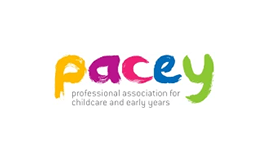
Does your child constantly line toys up, or insist on filling boxes and bags?
Does your child constantly line toys up, or insist on filling boxes and bags?
Do they love to hide under the table, or paint their arms instead of a picture?
These repeated behaviours can be completely normal and may mean they are experiencing a ‘schema’.
It’s actually all part of their essential brain development and is called a schema.
Find out more from Pacey or talk to ne of our early years team at the children’s centre.
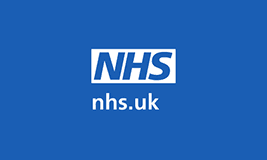
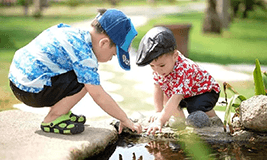
Playing with children throughout their baby days and childhood will build strong and lasting bonds. It helps build their self esteem, confidence and gives better life chances.
Playing with children throughout their baby days and childhood will build strong and lasting bonds. It helps build their self esteem, confidence and gives better life chances.
Play is good for us. Children learn best through play and this learning happens every day through the experiences and the fun they have.
To grow and develop, children need time and attention from someone who’s happy to play with them.
Children learn from everything they do and everything that’s going on around them.
When you’re washing up, let your child join in – for example, by washing the saucepan lids. When you cook, show them what you’re doing and talk to them as you’re working.
Getting them involved in the things you do will teach them about taking turns to help and being independent. They’ll also learn by copying what you do.
Sometimes things have to happen at certain times, and it’s important that your child learns this. But when you’re together, try not to have a strict timetable. Your child is unlikely to fit in with it and you’ll both get frustrated.
There’s no rule that says clearing up has to be done before you go to the playground, especially if the sun’s shining and your child’s bursting with energy.
As far as you can, move things around to suit both your and your child’s mood.
Every time you give your baby attention, chat and smile, or let them know you are there for them when they are upset, they are learning to trust you.
Every time you talk, sing and read to your child you are helping them learn the words that they need to communicate their thoughts and feelings.
Every time you help your child to learn a new skill or understand a new experience, you are helping them feel good about themselves and make sense of their world.

Learning to look after yourself is an essential life skill. Being able to wash, dress, eat and toilet independently are important milestones in a child’s development.
Learning to look after yourself is an essential life skill. Being able to wash, dress, eat and toilet independently are important milestones in a child’s development.
Not only do you as a parent or carer spend the first few years feeding, cleaning and dressing your child but whilst doing so you should be teaching them to do these activities for themselves.
Click on the links below to find out more.
Potty training
Using a potty is a new skill for your child to learn. It’s best to take it slowly and go at your child’s pace. Being patient with them will help them get it right, even if you sometimes feel frustrated. Children are able to control their bladder and bowels when they’re physically ready and when they want to be dry and clean. Every child is different, so it’s best not to compare your child with others. Bear in mind that most children can control their bowels before their bladder.
It usually takes a little longer for children to learn to stay dry throughout the night. Although most learn this between the ages of three and five, up to one in five children aged five sometimes wet the bed.
When to start potty training
Remember, you can’t force your child to use a potty. If they’re not ready, you won’t be able to make them use it. In time, they will want to use one – most children won’t want to go to school in nappies any more than you would want them to. In the meantime, the best thing you can do is to encourage the behaviour you want. Most parents start thinking about potty training when their child is between two and two-and-a-half, but there’s no perfect time. Some people find it easier to start in the summer, when there are fewer clothes to take off and washed clothes dry more quickly. Try potty training when there are no great disruptions or changes to your child’s or your family’s routine. It’s important to stay consistent, so you don’t confuse your child. If you go out, take the potty with you, so your child understands that you’d like them to wee or poo in the potty every time they need to go. Check that any other people who look after your child can help with potty training in the same way as you. You can try to work out when your child is ready. There are a number of signs that your child is starting to develop bladder control:
Potty training is usually fastest if your child is at the last stage before you start the training. If you start earlier, be prepared for a lot of accidents as your child learns. They also need to be able to sit on the potty and get up from it when they’re done, and follow your instructions.
Getting ready for potty training
Using a potty will be new to your child, so get them used to the idea gradually. It’s usually easier if boys start by sitting on the potty before they switch to standing up later on. Talk about your child’s nappy changes as you do them, so they understand wee and poo and what a wet nappy means. If you always change their nappy in the bathroom when you’re at home, they will learn that’s the place where people go to the loo. Helping you flush the toilet and wash their hands is also a good idea.
Leave a potty where your child can see it and explain what it’s for. Children learn by watching and copying. If you’ve got an older child, your younger child may see them using it, which will be a great help. It helps to let your child see you using the toilet and explain what you’re doing. Using your child’s toys to show what the potty is for can also help. You could see if your child is happy to sit on the potty for a moment, just to get used to it, when you’re changing their nappy, especially when you’re getting them dressed for the day or ready for bed at night.
How to start potty training
Keep the potty in the bathroom. If that’s upstairs, keep another potty downstairs so your child can reach the potty easily wherever they are. The idea is to make sitting on the potty part of everyday life for your child. Encourage your child to sit on the potty after meals, because digesting food often leads to an urge to do a poo. Having a book to look at or toys to play with can help your child sit still on the potty.
If your child regularly does a poo at the same time each day, leave their nappy off and suggest that they go in the potty. If your child is even the slightest bit upset by the idea, just put the nappy back on and leave it a few more weeks before trying again. Encouraging them to use the potty to wee will help build their confidence for when they are ready to use it to poo. As soon as you see that your child knows when they’re going to pee, encourage them to use their potty. If your child slips up, just mop it up and wait for next time. It takes a while for them to get the hang of it.
If you don’t make a fuss when they have an accident, they won’t feel anxious and worried, and are more likely to be successful the next time. Put them in clothes that are easy to change and avoid tights and clothes with zips or lots of buttons.
Your child will be delighted when he or she succeeds. A little praise from you will help a lot. It can be quite tricky to get the balance right between giving praise and making a big deal out of it. Don’t give sweets as a reward, but you could try using a sticker chart.
Potty training pants and pull-ups
Disposable or washable potty training pants (also called pull-ups) can be handy when you start potty training and can give children confidence when it’s time to swap nappies for “grown-up” pants. They don’t soak up wee as well as disposable nappies, so your child will find it easier to tell when they are wet. Training pants should be a step towards normal pants, rather than a replacement for nappies. Encourage your child to keep their training pants dry by using the potty. If your child is not ready to stop wearing nappies and it’s hard for them to know when they’ve done a wee, you can put a piece of folded kitchen paper inside their nappy. It will stay wet and should help your child learn that weeing makes you feel wet.
Night-time potty training
Focus on getting your child potty trained during the day before you start leaving their nappy off at night. If your child’s nappy is dry or only slightly damp when your child wakes for a few mornings in a row, they may be ready for night-time potty training. Ask your child to use the potty last thing before they go to bed and make sure it’s close by, so they can use it if they need to wee in the night. There are bound to be a few accidents, so a waterproof sheet to protect your child’s mattress is a good idea. Just like daytime potty training, it’s important to praise your child for success. If things aren’t going well, stick with nappies at night for a while longer and try again in a few weeks’ time.
Using the toilet instead of the potty
Some children start using the toilet instead of the potty earlier than others. A child’s trainer seat that clips onto the toilet can help make your child feel safer and more confident on the toilet. A step for your child to rest their feet on gets your child in a good position for doing a poo. If you have a boy, you need to make sure they sit on the toilet every day to poo. Once they have started weeing standing up it’s easy to forget about pooing, and this could lead to constipation.
Potty training with a disabled child
Some children with a long-term illness or disability find it more difficult to learn to use a potty or toilet. This can be challenging for them and for you, but it’s important not to avoid potty training for too long. Contact a Family have a parents’ guide on potty training with a disabled child. Visit the Contact a Family website for further support and ways of getting in touch with other parents with a disabled child.
More information and support
You can contact ERIC, The Children’s Bowel & Bladder Charity, for information on potty training. You can also call the ERIC helpline on 0845 370 8008 from Monday to Thursday 10am to 2pm, or email a question to helpline@eric.org.uk.
ERIC’s guide to potty training
Institute of Health Visiting parent tips: toilet training Talk to your GP or health visitor to get some guidance. They may refer you to a clinic for expert help.
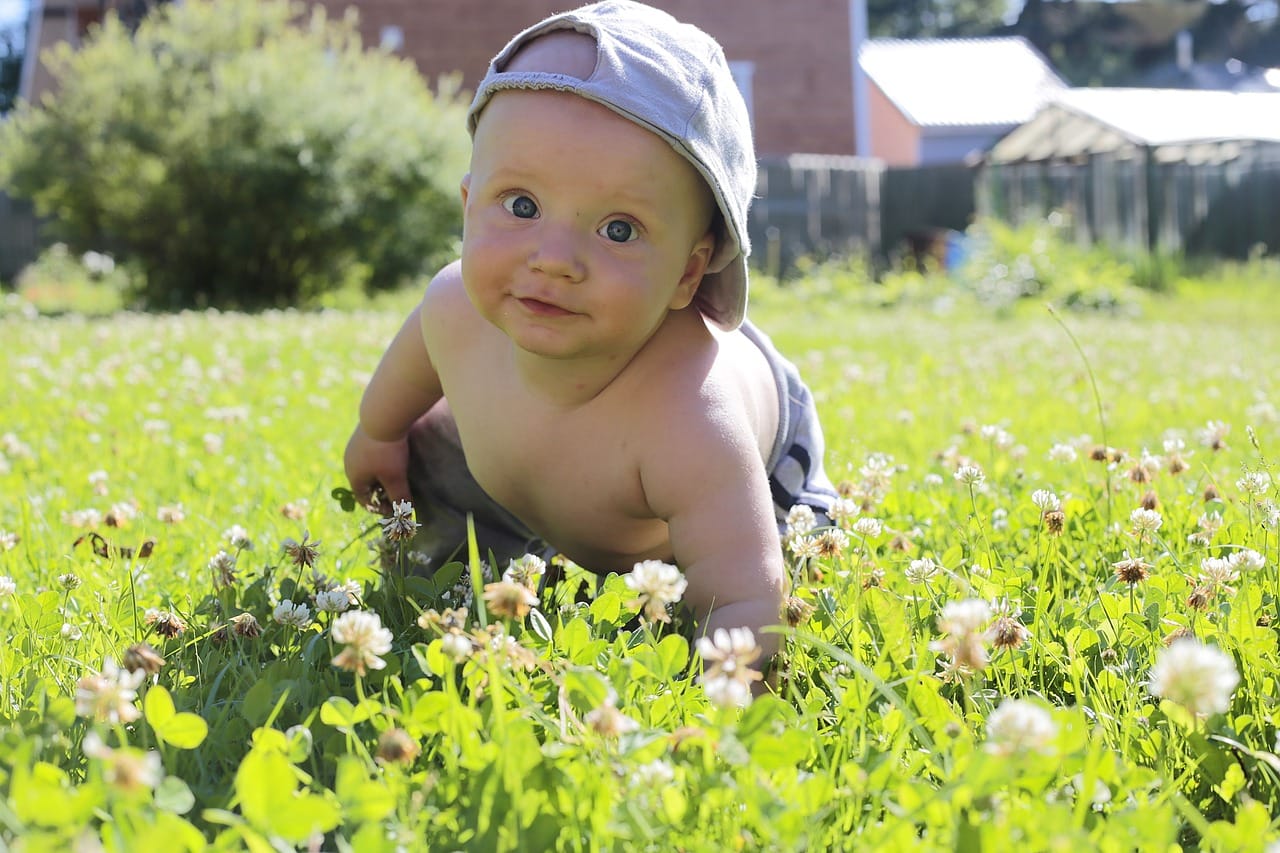
It is sometimes hard to know what to do and where to go to support your Mental health and Emotional Wellbeing. Click here for Information, advice and useful self-help resources for parents, carers, co-parents, fathers who are experiencing perinatal mental health concerns during pregnancy or in the two years following the birth of a child.
It is sometimes hard to know what to do and where to go to support your Mental health and Emotional Wellbeing. Click here for Information, advice and useful self-help resources for parents, carers, co-parents, fathers who are experiencing perinatal mental health concerns during pregnancy or in the two years following the birth of a child.
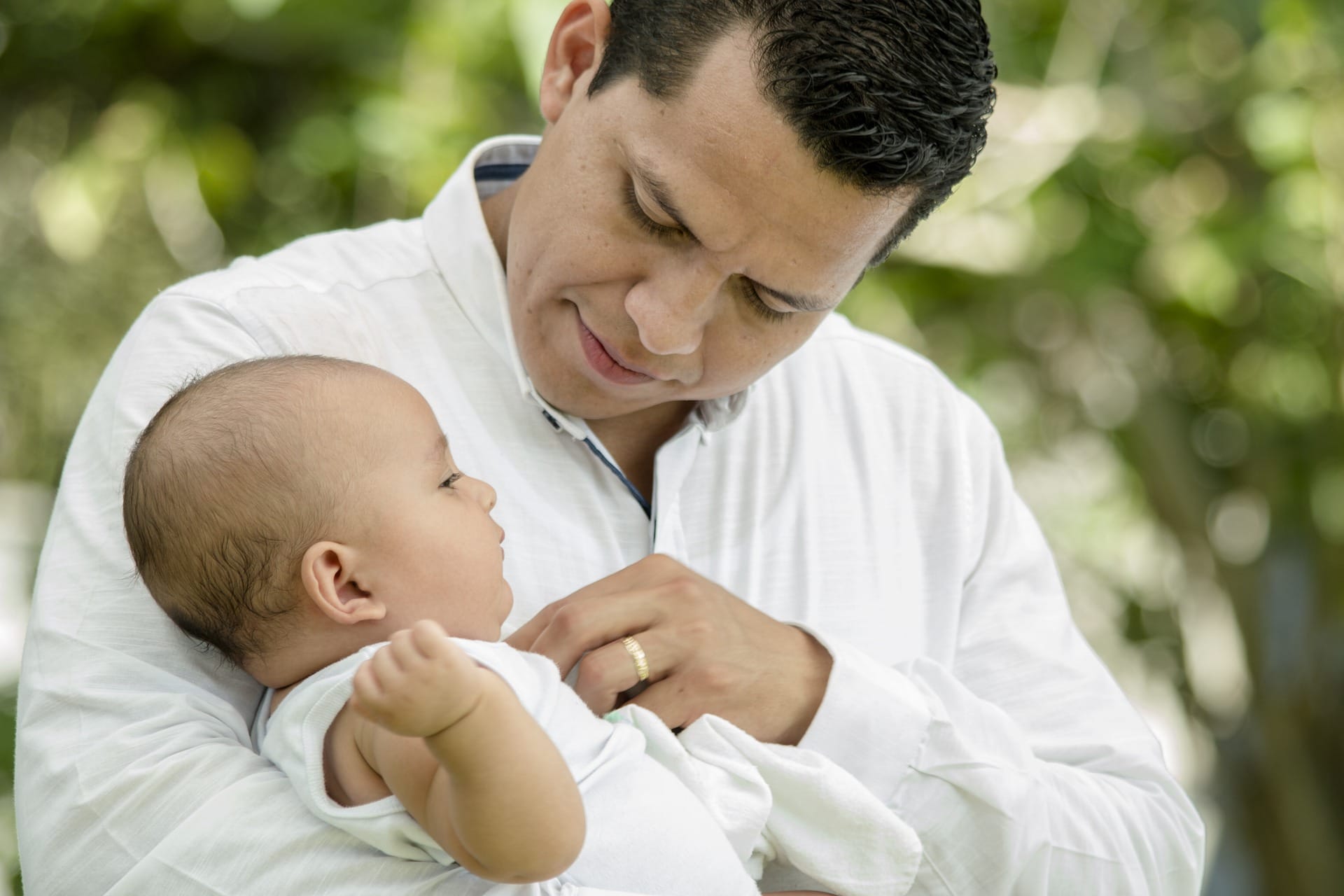
For Information, advice, support, groups and recommended resources to support parent infant relationships, click here.
For Information, advice, support, groups and recommended resources to support parent infant relationships, click here.
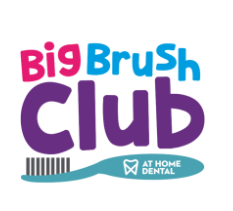
Big Brush Club are working with schools and early years settings to offer supervised toothbrushing for children every day. They equip staff with all the tools they need to run toothbrushing sessions, as well as provide expert guidance and ongoing support help parents and carers to understand the importance of oral hygiene by providing lots of support and resources for families.
Big Brush Club are working with schools and early years settings to offer supervised toothbrushing for children every day. They equip staff with all the tools they need to run toothbrushing sessions, as well as provide expert guidance and ongoing support help parents and carers to understand the importance of oral hygiene by providing lots of support and resources for families.
NHS England has selected At Home Dental, to deliver the Big Brush Club supervised toothbrushing programme for children in Early Years settings across the Southwest.
Look out for them popping into our family hub coffee mornings soon where they can offer advice and support on looking after your baby or child’s oral health.
Click on the button and for tips, information, advice and fun brushing videos.

The British Society of Paediatric Dentistry have downloadable leaflets created to support patients and their parents. They highly recommend their fun videos made with Dr Ranj - and Supertooth - which are on their Kidsvids page.
The British Society of Paediatric Dentistry have downloadable leaflets created to support patients and their parents. They highly recommend their fun videos made with Dr Ranj – and Supertooth – which are on their Kidsvids page.
You can download their leaflets from their website in many different languages. Here’s a couple of their leaflets in English.
Here’s a couple of the kidvids available. Click on kidsvids to see more.

Welcome to 0 to 19 Torbay. Helping families find ways to avoid illness and stay fit, happy and healthy.
Welcome to 0 to 19 Torbay. Helping families find ways to avoid illness and stay fit, happy and healthy.
Family Hubs are a new way of bringing together all the support a family may need and provides a welcoming space and a ‘front door’ for families from pregnancy through to young people turning 19 (or 25 if they experience SEND)
You can download our booklet here which is full of helpful information as you settle into the area. If you have any questions about our service or would like to find out what’s on in the area, please go to our website https://torbayfamilyhub.org.uk or find us on Facebook or Instagram, just search for 0to19Torbay. To access everything you need in one easy place, you may prefer to download the Family hub app.
Alternatively, you can contact our advice line on 0300 333 5352 or email
publichealthnursing.torbay@nhs.net.
As you connect with us, we hope you quickly feel welcome and
settled in Torbay.

Asthma is the most common long-term medical condition in children in the UK, with around 1 in 11 children and young people living with asthma. The UK has some of the highest prevalence, emergency admissions and death rates for childhood asthma in Europe. Outcomes are worse for children and young people living in the most deprived areas.
Asthma is the most common long-term medical condition in children in the UK, with around 1 in 11 children and young people living with asthma. The UK has some of the highest prevalence, emergency admissions and death rates for childhood asthma in Europe. Outcomes are worse for children and young people living in the most deprived areas.
Click on the link to get to the asthma resource section supporting children, young people, families, and everybody else involved in looking after them.

Using a potty is a new skill for your child to learn. It’s best to take it slowly and go at your child’s pace. Being patient with them will help them get it right, even if you sometimes feel frustrated. Children are able to control their bladder and bowels when they’re physically ready and when they want to be dry and clean. Every child is different, so it’s best not to compare your child with others. Bear in mind that most children can control their bowels before their bladder.
Using a potty is a new skill for your child to learn. It’s best to take it slowly and go at your child’s pace. Being patient with them will help them get it right, even if you sometimes feel frustrated. Children are able to control their bladder and bowels when they’re physically ready and when they want to be dry and clean. Every child is different, so it’s best not to compare your child with others. Bear in mind that most children can control their bowels before their bladder.
It usually takes a little longer for children to learn to stay dry throughout the night. Although most learn this between the ages of three and five, up to one in five children aged five sometimes wet the bed.
When to start potty training
Remember, you can’t force your child to use a potty. If they’re not ready, you won’t be able to make them use it. In time, they will want to use one – most children won’t want to go to school in nappies any more than you would want them to. In the meantime, the best thing you can do is to encourage the behaviour you want. Most parents start thinking about potty training when their child is between two and two-and-a-half, but there’s no perfect time. Some people find it easier to start in the summer, when there are fewer clothes to take off and washed clothes dry more quickly. Try potty training when there are no great disruptions or changes to your child’s or your family’s routine. It’s important to stay consistent, so you don’t confuse your child. If you go out, take the potty with you, so your child understands that you’d like them to wee or poo in the potty every time they need to go. Check that any other people who look after your child can help with potty training in the same way as you. You can try to work out when your child is ready. There are a number of signs that your child is starting to develop bladder control:
Potty training is usually fastest if your child is at the last stage before you start the training. If you start earlier, be prepared for a lot of accidents as your child learns. They also need to be able to sit on the potty and get up from it when they’re done, and follow your instructions.
Getting ready for potty training
Using a potty will be new to your child, so get them used to the idea gradually. It’s usually easier if boys start by sitting on the potty before they switch to standing up later on. Talk about your child’s nappy changes as you do them, so they understand wee and poo and what a wet nappy means. If you always change their nappy in the bathroom when you’re at home, they will learn that’s the place where people go to the loo. Helping you flush the toilet and wash their hands is also a good idea.
Leave a potty where your child can see it and explain what it’s for. Children learn by watching and copying. If you’ve got an older child, your younger child may see them using it, which will be a great help. It helps to let your child see you using the toilet and explain what you’re doing. Using your child’s toys to show what the potty is for can also help. You could see if your child is happy to sit on the potty for a moment, just to get used to it, when you’re changing their nappy, especially when you’re getting them dressed for the day or ready for bed at night.
How to start potty training
Keep the potty in the bathroom. If that’s upstairs, keep another potty downstairs so your child can reach the potty easily wherever they are. The idea is to make sitting on the potty part of everyday life for your child. Encourage your child to sit on the potty after meals, because digesting food often leads to an urge to do a poo. Having a book to look at or toys to play with can help your child sit still on the potty.
If your child regularly does a poo at the same time each day, leave their nappy off and suggest that they go in the potty. If your child is even the slightest bit upset by the idea, just put the nappy back on and leave it a few more weeks before trying again. Encouraging them to use the potty to wee will help build their confidence for when they are ready to use it to poo. As soon as you see that your child knows when they’re going to pee, encourage them to use their potty. If your child slips up, just mop it up and wait for next time. It takes a while for them to get the hang of it.
If you don’t make a fuss when they have an accident, they won’t feel anxious and worried, and are more likely to be successful the next time. Put them in clothes that are easy to change and avoid tights and clothes with zips or lots of buttons.
Your child will be delighted when he or she succeeds. A little praise from you will help a lot. It can be quite tricky to get the balance right between giving praise and making a big deal out of it. Don’t give sweets as a reward, but you could try using a sticker chart.
Potty training pants and pull-ups
Disposable or washable potty training pants (also called pull-ups) can be handy when you start potty training and can give children confidence when it’s time to swap nappies for “grown-up” pants. They don’t soak up wee as well as disposable nappies, so your child will find it easier to tell when they are wet. Training pants should be a step towards normal pants, rather than a replacement for nappies. Encourage your child to keep their training pants dry by using the potty. If your child is not ready to stop wearing nappies and it’s hard for them to know when they’ve done a wee, you can put a piece of folded kitchen paper inside their nappy. It will stay wet and should help your child learn that weeing makes you feel wet.
Night-time potty training
Focus on getting your child potty trained during the day before you start leaving their nappy off at night. If your child’s nappy is dry or only slightly damp when your child wakes for a few mornings in a row, they may be ready for night-time potty training. Ask your child to use the potty last thing before they go to bed and make sure it’s close by, so they can use it if they need to wee in the night. There are bound to be a few accidents, so a waterproof sheet to protect your child’s mattress is a good idea. Just like daytime potty training, it’s important to praise your child for success. If things aren’t going well, stick with nappies at night for a while longer and try again in a few weeks’ time.
Using the toilet instead of the potty
Some children start using the toilet instead of the potty earlier than others. A child’s trainer seat that clips onto the toilet can help make your child feel safer and more confident on the toilet. A step for your child to rest their feet on gets your child in a good position for doing a poo. If you have a boy, you need to make sure they sit on the toilet every day to poo. Once they have started weeing standing up it’s easy to forget about pooing, and this could lead to constipation.
Potty training with a disabled child
Some children with a long-term illness or disability find it more difficult to learn to use a potty or toilet. This can be challenging for them and for you, but it’s important not to avoid potty training for too long. Contact a Family have a parents’ guide on potty training with a disabled child. Visit the Contact a Family website for further support and ways of getting in touch with other parents with a disabled child.
More information and support
You can contact ERIC, The Children’s Bowel & Bladder Charity, for information on potty training. You can also call the ERIC helpline on 0845 370 8008 from Monday to Thursday 10am to 2pm, or email a question to helpline@eric.org.uk.
ERIC’s guide to potty training
Institute of Health Visiting parent tips: toilet training
Talk to your GP or health visitor to get some guidance. They may refer you to a clinic for expert help.

We’re here to provide trusted health visiting support for families in Torbay, offering guidance on everything from infant feeding and child development to sleep routines and emotional wellbeing. Whether you're a new parent or navigating the toddler years, our team is here to help your family thrive.
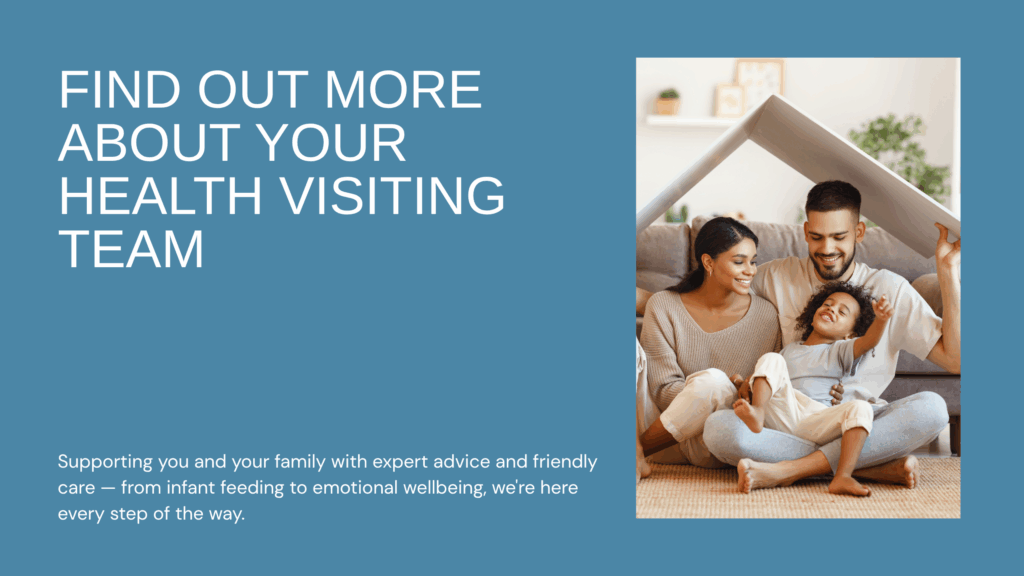
We’re here to provide trusted health visiting support for families in Torbay, offering guidance on everything from infant feeding and child development to sleep routines and emotional wellbeing. Whether you’re a new parent or navigating the toddler years, our team is here to help your family thrive.
Health visitors are specially trained nurses or midwives who work with public health nurses and community nursery nurses who are part of our 0 to 19 Torbay and Torbay Family Hub service. Together, we help families stay healthy, happy, and confident as they raise their little ones.
We work with midwives, GPs, paediatricians, local family hubs and voluntary organisations to provide the best possible care to you and your family.
A member of the Health Visiting Team will see you at least at least four times:
We will also offer two further developmental reviews,when your baby is between 9 and 12 months old. and again when they are 2 years around 3 months old.
During these visits, we’ll talk about how you and your baby are doing and answer any questions you have.
You can email your local health visiting team to change or amend an appointment. You can find out more about these appointments on the Torbay Family Hub website.
Come along to a child health clinic for advice, information and support for you and your child’s health and development from your local Health Visiting Team. You can find details of your local Infant Feeding Clinic, Feed and Nurture Groups, No Rush to Mush and Supporting a Solid Start at the Torbay Family Hub website what’s on pages.

Pet Safety Reminder: Please keep pets secured or in a separate room during our visit. If this isn’t possible, we’ll need to reschedule.
Our health visiting team is here to support you and your family with expert advice on a range of topics including the following. Get in touch today to find out how we can help you and your little one.
Watch this health visiting in the community video to find out more about the role of a health visitor.
Chat to us via the Torbay Family Hub App, just download from the Play or Apple Stores.
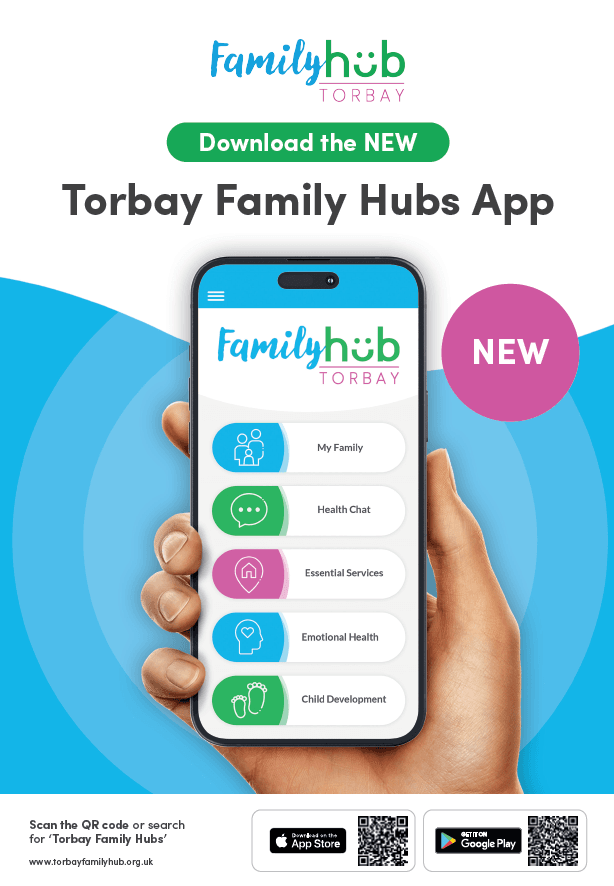
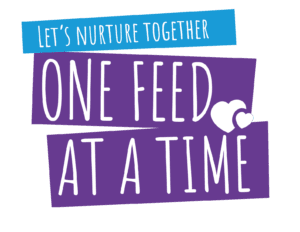
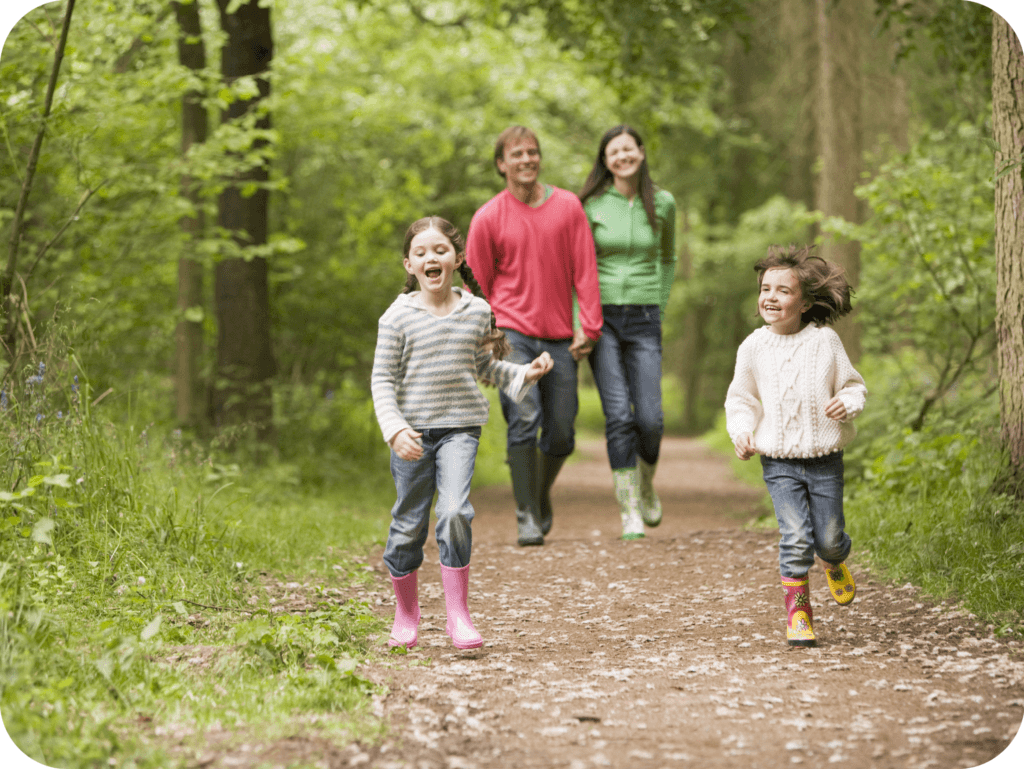
If you ever have a medical concern about your child or yourself, please call NHS 111. In an emergency, always call 999.
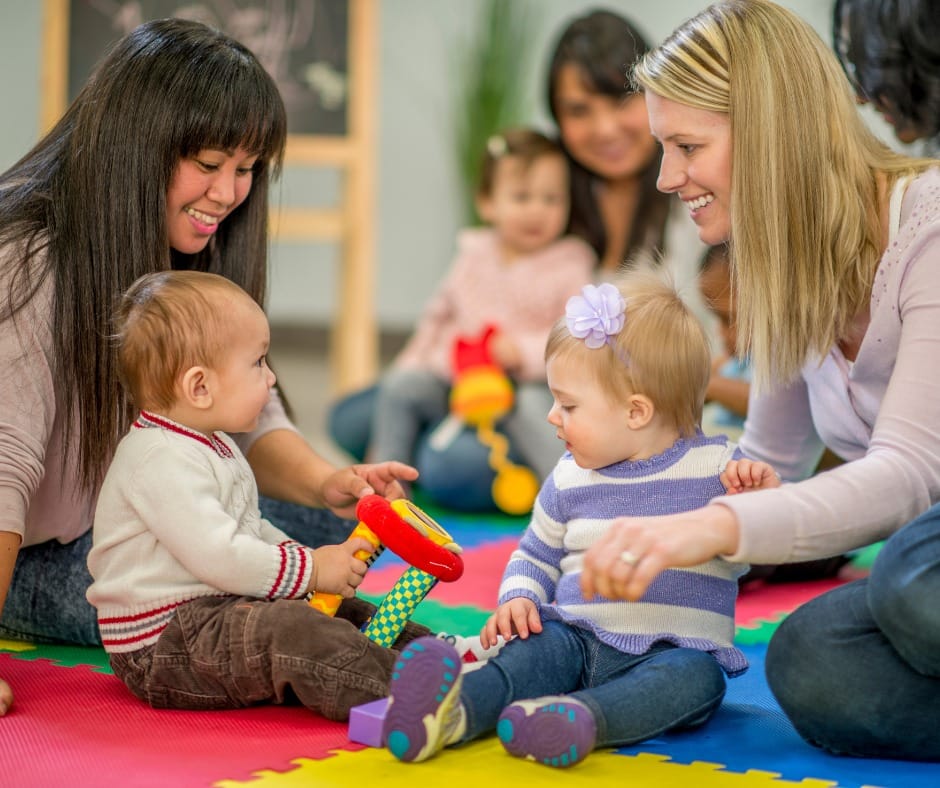
“We had a great experience which helped me not quit breastfeeding and I’m extremely grateful for Gail’s non-judgemental holistic approach”.
– A parent attending the infant feeding clinic
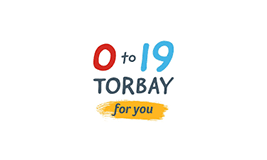
The Healthy Child Programme is designed to offer every family support in making healthy choices. It includes immunisations, health information, developmental reviews, and access to a range of community services and resources.Pregnancy and the first five years of life are one of the most important stages in life, as this is when the foundations of future health and wellbeing are laid down. The Healthy Child Programme is delivered and supported by Health Visiting teams during this phase.The Healthy Child Programme continues to be delivered and supported by School Nursing teams once your child starts school.If you have any worries about your baby’s or toddler’s development talk to your health visitor, even if it is some time since the last regular visit, or some time since you’ve been to a clinic. Health visitors can come to your home to talk through any concerns you have and can put you in touch with the people who can help if there are problems.Our 0 to 19 health practitioners will get in touch to review your child’s development at around 10 months and 2 years and 3 monthsIf you are worried about your baby or child’s development or would like to contact our health visiting team, please give us a call on 0300 333 5352 (Monday – Friday 9am to 5pm) or email publichealthnursing.torbay@nhs.net
The Healthy Child Programme is designed to offer every family support in making healthy choices. It includes immunisations, health information, developmental reviews, and access to a range of community services and resources.
Pregnancy and the first five years of life are one of the most important stages in life, as this is when the foundations of future health and wellbeing are laid down. The Healthy Child Programme is delivered and supported by Health Visiting teams during this phase.
The Healthy Child Programme continues to be delivered and supported by School Nursing teams once your child starts school.
If you have any worries about your baby’s or toddler’s development talk to your health visitor, even if it is some time since the last regular visit, or some time since you’ve been to a clinic. Health visitors can come to your home to talk through any concerns you have and can put you in touch with the people who can help if there are problems.
Our 0 to 19 health practitioners will get in touch to review your child’s development at around 10 months and 2 years and 3 months
If you are worried about your baby or child’s development or would like to contact our health visiting team, please give us a call on 0300 333 5352 (Monday – Friday 9am to 5pm) or email publichealthnursing.torbay@nhs.net

Being physically active every day is important for the healthy growth and development of babies, toddlers and pre-schoolers.
Being physically active every day is important for the healthy growth and development of babies, toddlers and pre-schoolers.
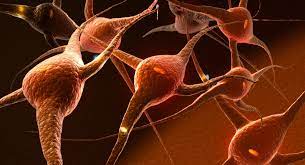
Children’s brains develop fastest and are at their most ‘plastic’ or adaptable in the womb and early years of life. During this time, many millions of neural are made and then pruned. This builds the architecture of the brain upon which other forms of development will rest.
Children’s brains develop fastest and are at their most ‘plastic’ or adaptable in the womb and early years of life. During this time, many millions of neural are made and then pruned. This builds the architecture of the brain upon which other forms of development will rest.
Right from birth, every time you play with your child, use silly voices, or even sing, you’re not just bonding, you’re building their brain. Find brain building tips from the NSPCC here
Building young brains with the Big Little Moments. Babies and toddlers are growing and learning every day and the little moments you share can make a big difference. From morning time to bedtime, waiting for the bus to playing together, every moment is a chance to help build a child’s brain.
The Brain Story is about how experiences shape our brains. It is a story for everyone, as we all depend on those around us for the experiences that build our brain architecture. This forms the foundation on which our future learning, behaviour and health is built. Read more from the Oxford Brain story.
Building a healthy brain. The world in which a young child grows up shapes the way their brain develops. The key to a healthy future, is a healthy start. The world around a child has a significant influence on their development so valuing the role of parents, carers and families is crucial. Find out more from the Royal Foundation, Centre for Early Childhood.
Early experiences affect the development of brain architecture, which provides the foundation for all future learning, behaviour, and health. Just as a weak foundation compromises the quality and strength of a house, adverse experiences early in life can impair brain architecture, with negative effects lasting into adulthood.
Serve & Return Interaction Shapes Brain Circuitry
A serve and return interaction is when an infant or young child babbles, gestures, or cries, and an adult responds appropriately with eye contact, words, or a hug. This responsive interaction builds and strengthens neural connections in the child’s brain that support the development of communication and social skills, as well as lifelong learning, health, and well-being.
Check out this video to learn more about serve and return and dive into the science behind it from the Center on the Developing Child.
5 Steps for Brain-Building Serve and Return
This how-to video from the Center on the Developing Child breaks down serve and return into five simple steps that are easy to do at home, or pretty much anywhere!
Download this flier from your 0 to 19 Torbay team.
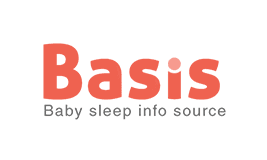
The baby sleep info source. For parents who wish to make informed choices about infant sleep and night-time care.
The baby sleep info source. For parents who wish to make informed choices about infant sleep and night-time care.

Understanding your baby’s weight chart. Your child’s growth will be recorded on centile charts in their personal child health record (PCHR), or red book.
Understanding your baby’s weight chart. Your child’s growth will be recorded on centile charts in their personal child health record (PCHR), or red book.
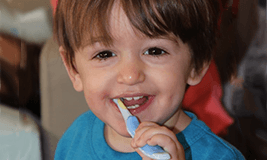
How to help your baby with teething and how to look after their teeth.
How to help your baby with teething and how to look after their teeth.
A regular teeth-cleaning routine is essential for good dental health. Information, advice and tips to help keep your kids’ teeth decay-free.

Potty training: how to start & best age to potty train. Great advice, information and video’s from ERIC, the Children’s bladder & bowel charity.
Potty training: how to start & best age to potty train. Great advice, information and video’s from ERIC, the Children’s bladder & bowel charity.
Watch our ‘Preparing for potty training‘ video to help with this first step:
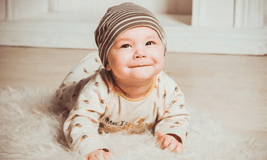
We are offering appointment only clinics for people who are worried about their baby or child’s development and for those that need to see a health visitor. Please give us a call or email us. Depending on your needs you will receive phone support or been seen face to face.
We are offering appointment only clinics for people who are worried about their baby or child’s development and for those that need to see a health visitor. Please give us a call or email us. Depending on your needs you will receive phone support or been seen face to face.
“Within Torbay there are child health clinics that you can attend and be able to see a member of the health visiting team. Within the team there are Health Visitors, Community Staff Nurses and Community Nursery Nurses.
With these staff you will be able to discuss any aspect of your child’s growth and development or family’s health and well-being.
Within the clinic there is the availability to have your child weighed. The World Health Organisation suggests that healthy babies are weighed at two, three, and four months and at one year.
We are offering appointment only clinics for people who are worried about their baby or child’s development and for those that need to see a health visitor. Please give us a call on 0300 333 5352 (Monday – Friday 9am to 5pm) or email publichealthnursing.torbay@nhs.net
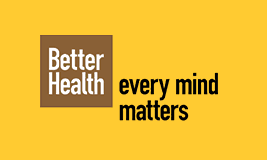
Find out how you can help a child to have good mental health, including knowing how to talk to a child about their mental health, and when to spot signs they might be struggling.
Find out how you can help a child to have good mental health, including knowing how to talk to a child about their mental health, and when to spot signs they might be struggling.
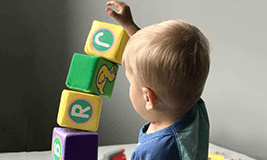
You will be offered regular health and development reviews (health visitor checks) for your baby until they are around 2. These are to support you and your baby, and make sure their development is on track.
You will be offered regular health and development reviews (health visitor checks) for your baby until they are around 2. These are to support you and your baby, and make sure their development is on track.
The reviews are usually done by a health visitor or a member of their team at one of our family hubs.
It’s helpful, where possible, for both parents to attend as this gives you both a chance to catch up with your health visiting team ask questions, talk about any concerns you have and think about your child’s next stage.
Aged 8 – 12 months
We offer developmental reviews for your baby at around 9 months old. These will usually take place either in your home or at one of our family hubs by a 0 to19 Family Health Worker.
We will talk to you about how your baby/child is growing and developing. We’ll share information about oral health, healthy eating, vision, hearing, language development and keeping your child safe.
Aged and 2 – 2½ years
You will be offer a developmental review when your child is around 2 years and 3 months olds. We will talk to you about how your baby/child is growing and developing. We’ll share information about oral health, healthy eating, vision, hearing, language development and keeping your child safe.
You will be sent a questionnaire about your child’s development to fill in before the review (the Ages and Stages Questionnaire, ASQ). Find out more about ASQ’s here.
If you are worried about your baby or child’s development or would like to contact our health visiting team, please give us a call on 0300 333 5352 (Monday – Friday 9am to 5pm) or email publichealthnursing.torbay@nhs.net
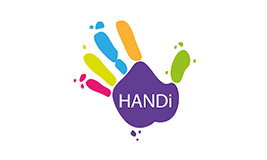
The HANDi Paediatric app gives up-to-date advice about common childhood illnesses and how to treat them.
The HANDi Paediatric app gives up-to-date advice about common childhood illnesses and how to treat them.
Developed by NHS organisations in Devon, the HANDi Paediatric app is available to download for free onto any Apple or Android smartphone or tablet.
Download the app for Apple devices
Download the app for Android devices
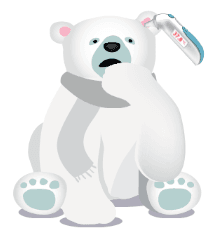
Caused by viruses, colds can’t be cured by antibiotics. But you can help relieve the symptoms and support your body as it fights the virus. Sore throats can be caused by both viruses and bacteria but are not usually serious. Dry coughs are caused by inflammation in the throat while chesty coughs are the result of phlegm being produced by the lungs. Mucus cough occurs when the phlegm is extra thick and needs thinning before the coughing action can work properly.
Caused by viruses, colds can’t be cured by antibiotics. But you can help relieve the symptoms and support your body as it fights the virus. Sore throats can be caused by both viruses and bacteria but are not usually serious. Dry coughs are caused by inflammation in the throat while chesty coughs are the result of phlegm being produced by the lungs. Mucus cough occurs when the phlegm is extra thick and needs thinning before the coughing action can work properly.
View or download this helpful leaflet on caring for children with coughs from the University of Bristol.
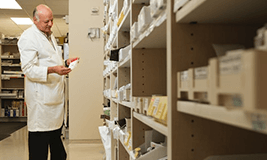
Community pharmacists and pharmacy technicians are qualified healthcare professionals, and are the right people to see if you need clinical advice, reassurance, over the counter medicines and even a private consultation room, should it be requested, to help safely manage a range of minor health concerns. Local pharmacy teams offer fast and convenient clinical support with no appointment needed.
Community pharmacists and pharmacy technicians are qualified healthcare professionals, and are the right people to see if you need clinical advice, reassurance, over the counter medicines and even a private consultation room, should it be requested, to help safely manage a range of minor health concerns. Local pharmacy teams offer fast and convenient clinical support with no appointment needed.
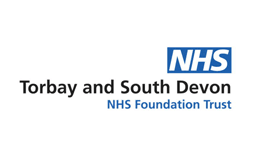
Useful information on common childhood illnesses, wellbeing, and further information.
Useful information on common childhood illnesses, wellbeing, and further information.
A parents guide to common childhood illness and wellbeing –common-childhood-illnesses-0-4

Diarrhoea and vomiting are common in adults, children and babies. They’re often caused by a stomach bug and should stop in a few days.
Diarrhoea and vomiting are common in adults, children and babies. They’re often caused by a stomach bug and should stop in a few days.
The advice is the same if you have diarrhoea and vomiting together or separately.
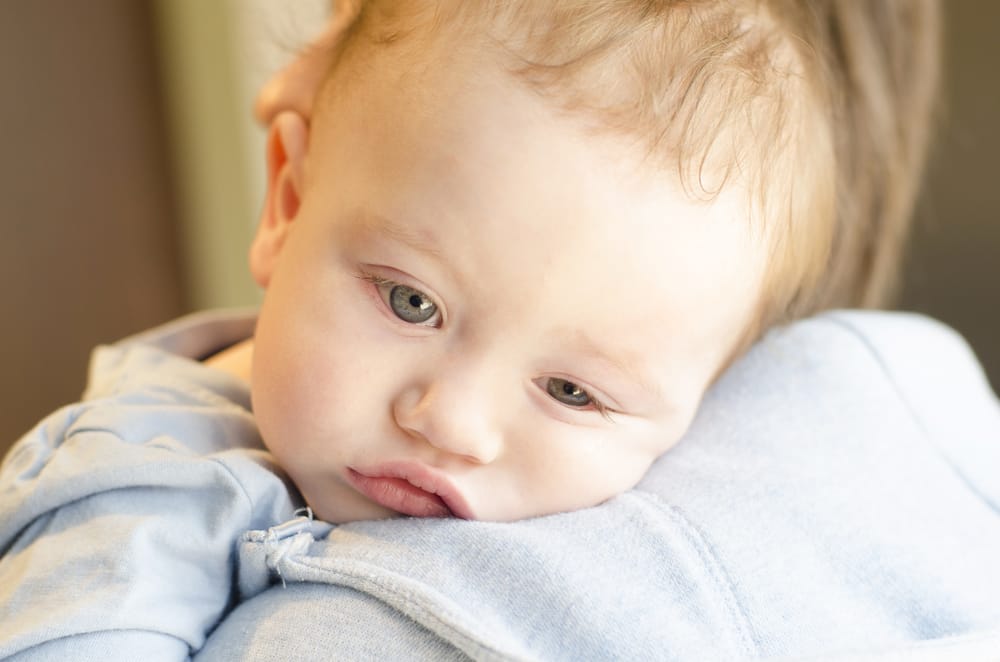
These are serious life threatening illnesses with many different causes. Anyone of any age can get meningitis or septicaemia.
These are serious life threatening illnesses with many different causes. Anyone of any age can get meningitis or septicaemia.
Sepsis is a life-threatening condition that arises when the body’s response to an infection injures its own tissues and organs.
It occurs when the body’s immune system – which normally helps to protect us and fight infection – goes into overdrive. It can lead to shock, multiple organ failure and sometimes death, especially if not recognised early and treated promptly.
Sepsis is indiscriminate: while it primarily affects very young children and older adults, and is also more common in people with underlying health conditions, it can sometimes be triggered in those who are otherwise fit and healthy.
Sepsis always starts with an infection, and can be triggered by any infection including chest infections and UTIs. It is not known why some people develop sepsis in response to these common infections whereas others don’t.
For more information see:
View or download these helpful leaflets.
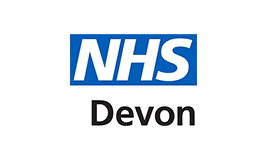
An online health and wellbeing app which can provide you with a range of wellbeing resource this can be found at http://devon.orchahealth.comYou are one click away from hundreds of apps that can help you with your health and wellbeing.All the apps in your Health App Library have been tested (assessed) by the Organisation for the Review of Care and Health Apps (ORCHA).Start browsing your Health App Library now by using the search bar at the top. Or click on a category such as sleep, women’s health, men’s health or mental health.
An online health and wellbeing app which can provide you with a range of wellbeing resource this can be found at http://devon.orchahealth.com
You are one click away from hundreds of apps that can help you with your health and wellbeing.
All the apps in your Health App Library have been tested (assessed) by the Organisation for the Review of Care and Health Apps (ORCHA).
Start browsing your Health App Library now by using the search bar at the top. Or click on a category such as sleep, women’s health, men’s health or mental health.

Constipation is a decrease in the frequency of bowel movements; characterized by the passing of hardened stools which may be large and associated with straining and pain.
Constipation is a decrease in the frequency of bowel movements; characterized by the passing of hardened stools which may be large and associated with straining and pain.
Normal stool frequency in children: ranges from an average of 4 per day in the first week of life to 2 per day at 1 year of age. Passing between 3 stools per day and 3 per week is usually attained by 4 years of age.
Contributing factors include: Pain, fever, inadequate fluid intake, reduced dietary fibre intake, toilet training issues, the effects of drugs, psychosocial issues, and a family history of constipation.
Watch this animation from ERIC to understand how constipation affects children and how it should be treated:
Useful links
The organisations below can provide more information and support for parents and carers of children and young people with constipation:
ERIC (Education and Resources for Improving Childhood Continence)
You can also go to NHS UK for more information about constipation in children
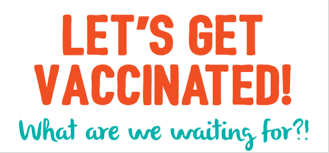
Childhood vaccinations – or jabs have been around for over 200 years starting with the first smallpox vaccine. Different vaccinations are given out at different times across childhood. But don’t worry if you or your child has missed out you can catch-up. Vaccines work by teaching your immune system how to create antibodies that protect you from diseases. Think of antibodies as your body’s defence system. It’s much safer for your immune system to learn this through vaccination than by catching the diseases and treating them. Once your immune system knows how to fight a disease, it can often protect you for many years.
Childhood vaccinations – or jabs have been around for over 200 years starting with the first smallpox vaccine. Different vaccinations are given out at different times across childhood. But don’t worry if you or your child has missed out you can catch-up. Vaccines work by teaching your immune system how to create antibodies that protect you from diseases. Think of antibodies as your body’s defence system. It’s much safer for your immune system to learn this through vaccination than by catching the diseases and treating them. Once your immune system knows how to fight a disease, it can often protect you for many years.
Vaccines all have different names depending on what disease they are helping to protect you against. The diseases they cover may be in their medical term rather than how we know them so whooping cough has the medical term pertussis! They may also be reduced down as their long name is a bit of a tongue-twister – so Hib stands for Haemophilus Influenzae type b.
They can also be delivered to different sites – thigh, upper arm or into the nostrils.
Below lists the standard routine childhood immunisations with when you should have expected to have them, what they are for and where you will receive them.
Routine Childhood Immunisations poster
Frequently Asked Questions:
I think I’m missing some of my childhood vaccinations – how do I find out?
First step is to find out whether you have a completed red book which includes a section on your vaccination history.- You can also check your vaccination history via the NHS app.
I know I am missing some of my childhood vaccinations – how do I access them?
Contact your GP surgery to find out the best way to book in for your missed vaccinations.
I’m not sure if my child is up to date with their childhood vaccinations – how do I find out?
First step is to check your child’s red book which includes a section on your vaccination history.
If you’re not sure you took this with you to the vaccination or you can’t find it. The next step is the NHS app from here you can also view your child’s vaccination record. If you’re child has not been added to your account, please contact your GP surgery.
I know I my child is missing some of their childhood vaccinations – how do I access them?
Contact your GP surgery
Are vaccines important?
Yes! Vaccines can help prevent you or your child becoming infected. The side-effects of these diseases can cause painful and/or permanent disabilities. Vaccines also help to protect the community, we see less of these nasty infections because of the majority of the population is vaccinated – something referred to as herd immunity. This also helps to protect those who can’t get vaccinated or have low immune systems for example those undergoing cancer treatment.
Some of the vaccines such as the HPV vaccine help to also reduce the risk of cervical cancer later in life.
If you’re a young person and would like to catch up on any vaccines you have missed, these can still protect you as you head into adulthood. They’re not just for when you’re young!
Useful sites:
Spotlight on Measles: This is an infection that can spread easily for example through the sharing of utensils, towels, clothes or bedding.
It can appear like a cold with symptoms like a high temperature, runny or blocked nose, sneezing and a cough. It can include red, sore, watery eyes – which means at the first stage you may not know it is measles.
The rash will appear a few days later.
Measles can lead to more serious problems such as pneumonia, meningitis, blindness and seizures – this is why the vaccine is key to protect the community. When a child or adult has measles they can’t attend nursery, school or work for at least 4 days after the rash appears. They need to avoid close contact with babies, people who are pregnant and people with weakened immune systems. Catching measles in pregnancy can cause miscarriage or still birth, premature birth or having a baby of low birth weight.
